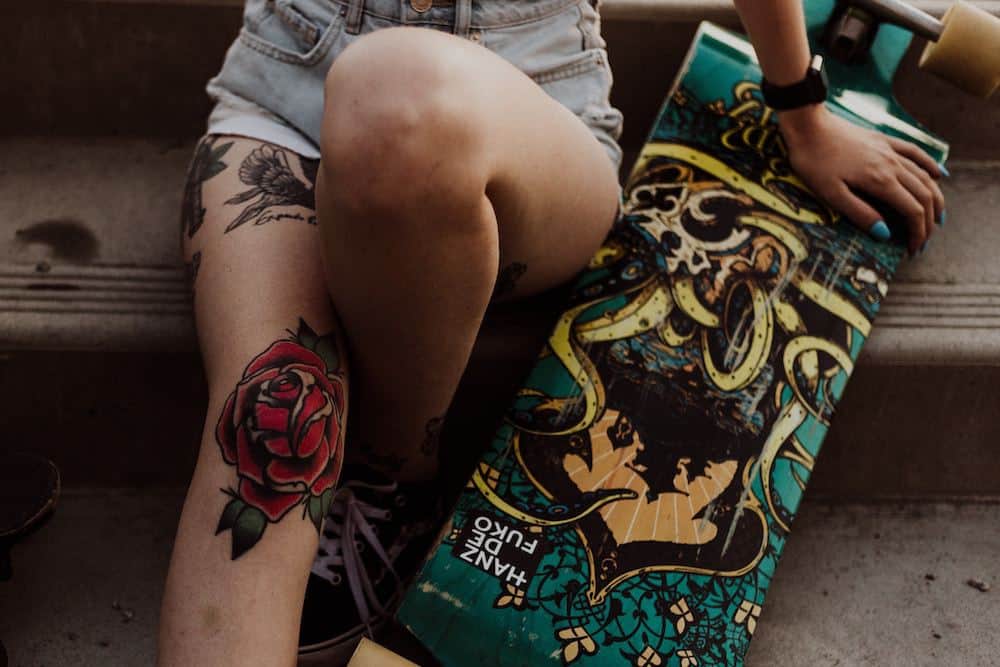Nothing can be more distressing than to experience knee pain after longboarding. Whether you are a seasoned pro, or a beginner, no one is immune to injuries. One of the most common people experience, is that of knee pain.
In short, longboarding can be bad for your knees if your don’t wear proper protection gear, have bad form, or have a prior history of knee problems. However, that shouldn’t prevent you from enjoying the sport. There are many ways to prevent and/or reduce knee pain so you can spend more time cruising around.
How Does Longboarding Affect Your Knees?
Injuries from longboarding can be common if you don’t take proper steps to prevent them. It also depends on what type of longboarding you are doing;
For example, if you ride just to get to and from work or school or just to cruise around town, then you are less likely to fall, crash or injure yourself compared to people who ride downhill at high speeds.
Generally, if you use protective gear like knee pads you shouldn’t face many injuries from falls; However, you could easily strain the muscles in your knee/lower leg in a couple of ways.
- pushing (the act of propelling yourself forward) excessively
- Knees are locked and not allowing your body to absorb impacts
- skating while already injured
Longboarding dancing is a popular form of creative longboarding. You should be extra careful of other people cruising around the same speed as there is a much higher chance of injury as you move about on the board. Be sure to watch your footing as misplacing your foot could lead other injuries.
How to Prevent Injury to Your Knees While Longboarding
It is much easier to prevent injuries than to rehabilitate them. Preparation can go a long way helping you stay on the board and out of a knee brace.
The easiest and most obvious way to prevent any sort of injuries is protective gear. Using knee pads is the best way to prevent physical injuries from falling, tripping or maybe even a shoddy quick stop. Although they may not prevent muscle injuries like a strain, they can prevent most injuries you will face.
The following is a list of some good protective gear that is best to get started with:
Helmet: In a recent study, head and neck injuries are the second most common type of injury for longboarders. If you only wear one thing for protection, make sure it’s your helmet. This one is a great option for just about anyone.

Knee pads and Elbow pads: In the same study, it found that injuries to upper extremities, such as hands and arms is the most common type of injuries longboarders face. In the majority of these cases, longboarders mentioned they had fallen with their arms and hands outstretched, causing road rash, and sprained wrists. Knee and elbow pads are important since you’re more likely to injury those body parts.

Sliding gloves (if required): If you’re into downhill longboarding, sliding gloves are essential to staying safe. Not only do they help protect your hands and fingers from injury, they also help give you an extra pivot point to allow for greater balance, ability to control speed, and turn easier.

Best Exercises to Mitigate Knee Pain From Longboarding
It’s best to stretch both before and after riding. Rather than focus on just your legs, consider stretching your whole body. This will give you greater flexibility to ride safely.
- Start with your neck and shoulders with some arm rotations. Follow that up with pulling your elbow across your neck and stretch it horizontally.
- Next move onto your hips by doing some hip rotations in both directions.
- Your calves are an important part to stretch, they help you balance on the board the most. Lift the front part of your foot off the ground, keeping your heel on the floor. Do this on a slope and stretch your calf muscle by gently moving your weight forward to further stretch. (if this starts hurting you should stop immediately; This means you’ve stretched too far).
- You should also do long lunges on both legs to work your pelvis and thighs.
- Finally, you should stretch your ankles. If they are stiff you could injure yourself easier. Do some simple ankle rotations on both sides, in both directions.
Lastly, it’s recommend to cool down your muscles afterwards as well. Doing more stretches after a ride helps with keeping your muscles in good condition and prevents muscle injuries.
What to do if You Experience Knee Pain
If you do experience knee pain while riding, please STOP.
Continuing the activity with pain can cause irreparable damage (whether you’re just cruising or going downhill). You should always stop because continuing could lead to you hurting yourself more than necessary.
After stopping, do your best to get off the path or road. Remember to always ride with a boddy in the off chance that you are unable to walk.
If the injury is serious enough to prevent you from walking, it would be best to visit the ER or call for an ambulance to get you the help you need.
Using an ice pack knee wrap will help alleviate some immediate pain and help you recover after a long day of longboarding whether you have knee pain or not. Always be sure to protect your joints.
If the injury/pain persists for a couple of days, the best thing to do is visit a doctor or physical therapist to get professional advice.
Conclusion
To summarise, while using a longboard for any style of riding, there may always be a risk of knee injury. Though taking the right precautions can help prevent that, there will always be a slight risk of injury.
Don’t let this scare you if you are learning to ride a longboard as everything can come with risks. If you are prepared, you can reduce this risk immensely.

